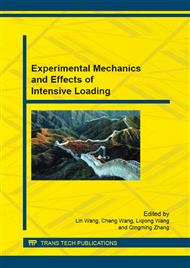p.102
p.107
p.113
p.119
p.124
p.130
p.137
p.143
p.153
Effect of Isothermal Heat Treatment on Dynamic Properties of a High Strength Steel
Abstract:
The high strength steel which was subjected with isothermal heat treatment at three different temperatures, namely 330°C, 350°Cand 380°C after different quenching temperature namely 880°C and 900°C,was investigated in this paper. The quasi-static and dynamic mechanical properties of new high strength steel was tested by universal material testing machine and Split Hopkinson Pressure Bar (SHPB). Experimental results have showed that the yield strength and tensile strength of the steel reach 1100MPa and 1400MPa respectively. Hardness, yield strength and toughness are found to decrease with the consequently increasing of isothermal temperature under the same quenching temperature. The compression properties of the steel under quenching temperature of 880°C are higher than that of 900°C with the same isothermal temperature. It can be found that the steel which is subjected with isothermal heat treatment show strain rate sensitivity under high velocity impact. When isothermal temperature is set 380°C, the steel exhibits the most obvious strain rate hardening effect.
Info:
Periodical:
Pages:
124-129
Citation:
Online since:
August 2015
Authors:
Price:
Сopyright:
© 2015 Trans Tech Publications Ltd. All Rights Reserved
Share:
Citation:


